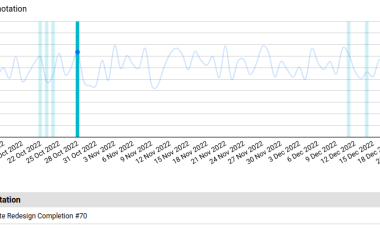Drupal Hubspot CRM Integration: How does their Combo Work?
Marketing automation makes entrepreneurs’ lives across various industries easier with unprecedented workflow-boosting capabilities. It brings together content assets such as landing pages, emails, web events, and others and delivers them to prospects when most relevant to them in their buying cycle. Most importantly, it excludes numerous human factor errors, boosts services availability, and continuously saves costs. All these efforts are critical in managing marketing initiatives dedicated to running an online business of any sort.
Let’s study Drupal and HubSpot first! Right off the bat, we can say that a powerful combo of a dedicated eCommerce platform like Drupal and an excellent CRM like Hubspot can help you avoid tons of headaches to achieve a smooth flow of automated marketing processes.1 Each offers tangible benefits to its users worth considering when looking for a new web platform.
What is HubSpot?
HubSpot is a leading contact relationship management (CRM), marketing, sales, and customer service software company with a simple mission: to help companies maximize sales and grow better.2 HubSpot offers a wide range of resources to this end, including the following five main products or Hubs:
- Marketing Hub
- Sales Hub
- Service Hub
- CMS (Content Management System) Hub
- Operations Hub
Many of HubSpot’s tools and marketing services that form the foundation of these Hubs are entirely free and fully functional. Businesses can derive substantial value from using Hubspot’s tools in their daily operations without paying. Some of these accessible technologies include the following:
- CRM
- Email marketing
- Ads management
- Form creation
- Landing pages
- Web analytics tracking
- Chatbots
- Customer support
- Much more
How Does HubSpot CRM Work?
HubSpot works by being connected to the organization’s website, and, through the use of the many tools in its Hubs, it attracts, engages, and delights leads and customers. It is primarily accomplished by using the platform to create optimized website content, drive traffic to the website, convert the traffic to leads, nurture the leads into customers, and provide exceptional customer support. HubSpot’s infrastructure uses cloud technology, so users in an organization can utilize the platform from anywhere on the planet simply by logging in.
What is Drupal?
Drupal is free, open-source software that can be used by individuals or groups of users (even those lacking technical skills) to create and manage many types of websites with ease. The application includes a content management platform and a development framework.
You can use Drupal for:
- Blogs
- Personal or corporate Web sites
- Portals
- Forums
- E-commerce sites
- Intranets
- Resource directories
- Social networking sites.
Drupal is written in the PHP programming language. Upon download, the software is ready-to-use and includes a web-based installer and add-on modules. The software supports content management, collaborative authoring, newsletters, podcasts, image galleries, peer-to-peer networking, file uploads/downloads, etc.
How does Drupal Work?
Now that you know what it entails, you need to understand what Drupal is used for and what makes it shine as a CMS.3 With Drupal, you no longer have to go through a lot to create and publish your content. That’s because it allows users to pull this off without the hassle.
But how is this even possible in the first place? The CMS platform is famous for accommodating unlimited content types.4 Some of the most popular ones include media and text available in highly customisable forms. To ensure users have a remarkable digital experience, Drupal retrieves, filters, and presents the content as powerful but simple-to-use tools.
Furthermore, Drupal contains intuitive content creation tools and powerful in-place editing tools that ensure you get things done without the hassle. To give you the tip of the iceberg, Drupal is full of features and highly customisable, unlike other CMS systems out there.5
Drupal Hubspot CRM Integration: How does their Combo Work?
Having a website to attract leads and having leads are two parts of building relationships and growing a business. Following up with prospects who have contacted you is a crucial third part of the process.
Once the website transfers the prospect information to HubSpot, it can be set up to notify you that the lead has come in. You can do some preliminary research about the info and follow up with them to determine if the lead is qualified and you’re a good match.
Automating the entire process of turning a site visitor into a lead is a straightforward development process that has the long-term benefit of removing obstacles, making it easier for you to focus on developing relationships.
Benefits of Hubspot CRM-Drupal Integration
Since your leads and customers engage with your website, your customer tracking system and data collection system need to interact with your website system. And this is why your Drupal- HubSpot CRM Integration must work together.
- A powerful Drupal-Hubspot CRM integration can funnel all website activity into your HubSpot for lead analysis, essential insights and reporting purposes. With this tactic, you will be able to view how your website is performing alongside all your other marketing channels and related content strategies.
- HubSpot is only as good as the data it collects, and this is why integrating HubSpot into Drupal efforts is necessary. When it comes to data collection and analysis - HubSpot is the king, and when it comes to creating data, Drupal is the king. Both rock the digital world when combined.
- A website offers a wealth of information for your business, with lead forms being one of the most important aspects of a website. Without HubSpot, your lead forms will be emailed to your employees, who will have to input the data into Hubspot or a database manually. It is one way to collect information but can lead to human error and missed opportunities. By integrating your Drupal and HubSpot, you can capture this data in real-time and automatically transfer lead information into HubSpot. It saves your business time and increases the value of the lead information as it is received and logged immediately.
- By integrating your platforms, you create automated processes that ensure your team members have instant access to all your customer information and no longer stress about misinformation or finding customer records. This seamless integration ensures your staff are always on the ball when following up with leads. By automatically collecting website data about individual web visitors, your salespeople have greater insight into the viewer, providing a more personalised experience in re-marketing and sales follow-up messages.
- Having Drupal & HubSpot CRM integrated, you significantly increase response time to queries. If someone fills out a lead form or has made a specific website request, Hubspot can quickly identify the person or department to which the inquiry should be forwarded. It ensures superb customer service, increases brand trust, and leads to more outstanding sales at the end of the day.
Final Say
Websites are generally the first place of entry for your prospective clients. That’s where Drupal-Hubspot CRM integration comes in! By capturing their online behaviour and data, you can provide a more engaging user experience for your audience, guiding them through the sales process with ease.
Plus, Drupal-Hubspot CRM integration allows you to streamline your workflow and save time. Instead of manually updating contacts in a separate system, you can bring HubSpot and your Drupal website together so that data seamlessly funnels into your pipelines. Is there any benefit missing from the list that you’d like us to know? Let us know in the comments below.



